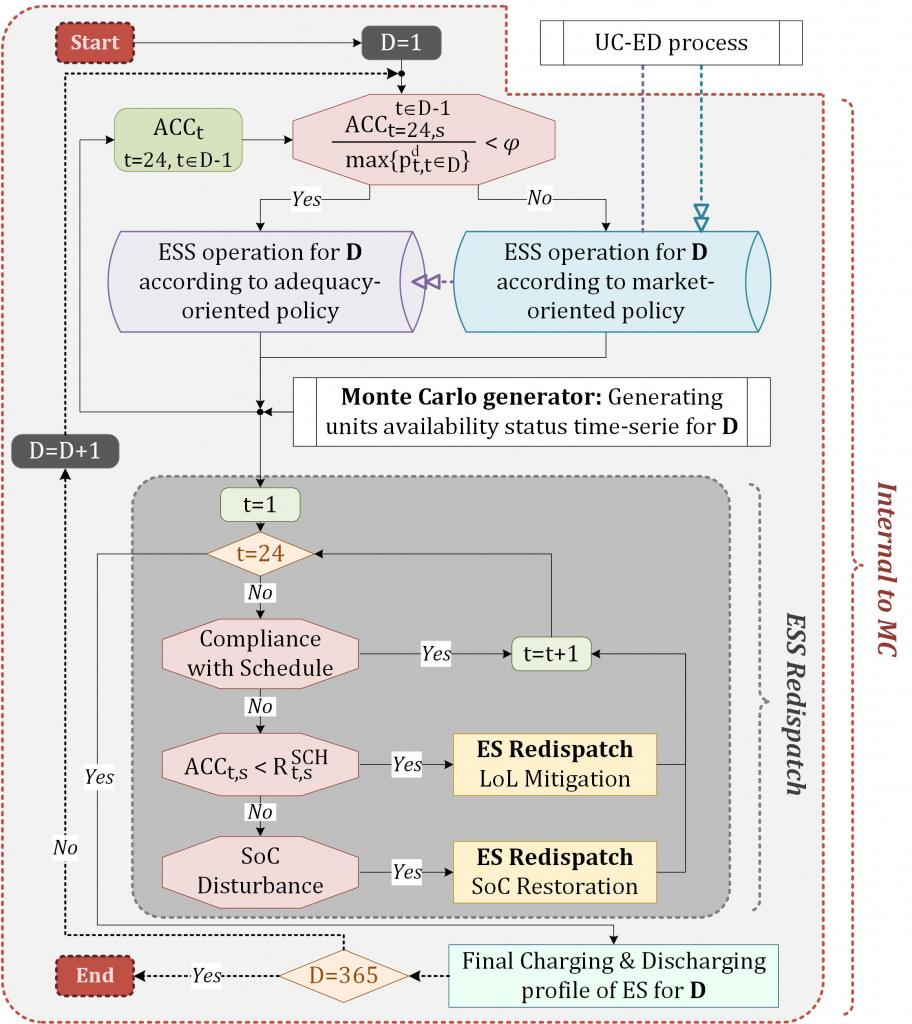PhD thesis defense to be held on April 10, 2025 at 13:00 (via Internet)

Picture Credit: Pantelis Dratsas
Thesis title: Contribution of electricity storage to resource adequacy of power systems
Abstract: The fundamental objective of this thesis is to evaluate the contribution of energy storage to the capacity adequacy of power systems.
To this end, a comprehensive stochastic model for resource adequacy assessment (RAA) is initially developed, based on Monte Carlo simulation technique. Alternative methods for incorporating energy storage into RAA models, as described in the international literature, are introduced and elaborated, along with defining the concept of capacity credit, which indicates the share of storage capacity contributing to system adequacy.
In the first part of this thesis, the contribution of storage to capacity adequacy is assessed under a variety of scenarios that enable the evaluation of different factors affecting the capacity credit of storage facilities. This analysis implements a storage management policy aimed at minimizing unserved load, as is common in literature. The parametric analysis examines factors such as the characteristics of storage facilities and the features of the power system in which they are integrated. Specifically, the scenarios explore different technologies (e.g., pumped hydro storage stations and battery storage systems), sizes (power and energy capacity), round trip efficiency levels, and reliability levels of storage facilities. The analysis also considers varying conditions for the development of renewable energy sources (RES) in the system, including the technology mix and penetration levels, and investigates the impact of system adequacy levels and the reliability characteristics of generation units on the estimated contribution of storage to adequacy.
The contribution of storage to system capacity adequacy largely depends on how it is managed. Identifying the limitations and shortcomings of existing approaches, in the second part of this thesis, a novel approach for integrating stand-alone storage facilities into stochastic resource adequacy assessment models is proposed and developed. The new methodology is based on the management of storage facilities according to their participation in electricity markets, subject to real-time redispatch according to system needs, in order to maximize their contribution to capacity adequacy during generation system failures that may cause power deficits. In case of real-time contingencies, a realistic operating profile is generated for energy storage systems aiming to enhance system reliability by mitigating loss of load events, while maintaining their market schedule to the extent possible. Unlike traditional methods in the literature, the proposed approach does not rely on perfect foresight for future occurrences such as generator failures, nor does it utilize single-dimensional adequacy-focused management strategies that are disconnected from regular operation of the assets. Instead, storages normally follow a market-driven schedule, being redispatched in real-time when necessary for capacity adequacy purposes, considering their energy and power capacity limitations.
The proposed methodology is applied to battery energy storage station configurations of different sizes to calculate system reliability levels and the capacity credit of storage. Additionally, a comparative analysis is conducted between the proposed methodology and existing approaches in the literature for integrating storage into resource adequacy assessment models. This includes interpreting and evaluating system adequacy outcomes and the contribution of storage to adequacy under alternative methodologies. However, beyond adequacy results, the analysis extends to a holistic evaluation of storage’s role in system operation and cost.
Following, the proposed real-time redispatch method is extended to battery energy storage systems deployed behind-the-meter of renewable energy facilities, specifically photovoltaic (PV) stations. The dispatch schedule, which represents the scheduled participation of PV-plus-battery stations in the market, is designed to maximize their market revenue but can be modified in real-time by applying the developed redispatch method, if generation shortfall events take place, to enhance the contribution of generation and storage assets to capacity adequacy. Alongside the proposed method, existing dispatch approaches from the literature for such stations are developed and implemented within resource adequacy assessment models, demonstrating that these approaches define the range of potential contribution of PV-plus-battery stations to capacity adequacy. The proposed and existing methods are applied to various alternative PV-plus-battery configurations, and the system adequacy levels, as well as the capacity credit of the stations are computed and compared under each alternative.
The capacity adequacy contribution of batteries integrated into PV stations is compared to that of stand-alone battery storage facilities, applying the proposed real-time redispatch methodology in both cases.
Supervisor: Professor Stavros Papathanassiou
PhD Student: Pantelis Dratsas
